As the spring and summer seasons are heading our way and that long-desired vacation is everything you have dreamt of for the past few months, you may feel as if there is nothing that can keep you away from the time of your life.
Regardless of how disappointing it may sound, I feel the need to inform you that there is a danger one can easily succumb to – ticks and other little malevolent insects. Those fellas are capable of not only ruining your dreamy holidays but can also cause more serious concerns leading to health issues, as well as lethal outcomes.
[amazon table=”7932″ tracking_id=”how-to-get-rid-of-ticks-20″]
Below, I am aiming at giving you some answers to the most frequent questions on how to avoid ticks and get rid of them.
Before getting to deal with them, let’s learn a bit more about the bugs themselves.
What Do We Know About Ticks?
Ticks are a breed of arachnids, which makes them more like a house spider than a common bug in your bedroom. Studies suggest that the insects have been around for more than a couple of tens of million years. Though the majority of them do not transfer diseases and are mostly harmless, those which do have a tick-borne illness are extremely dangerous to humans.
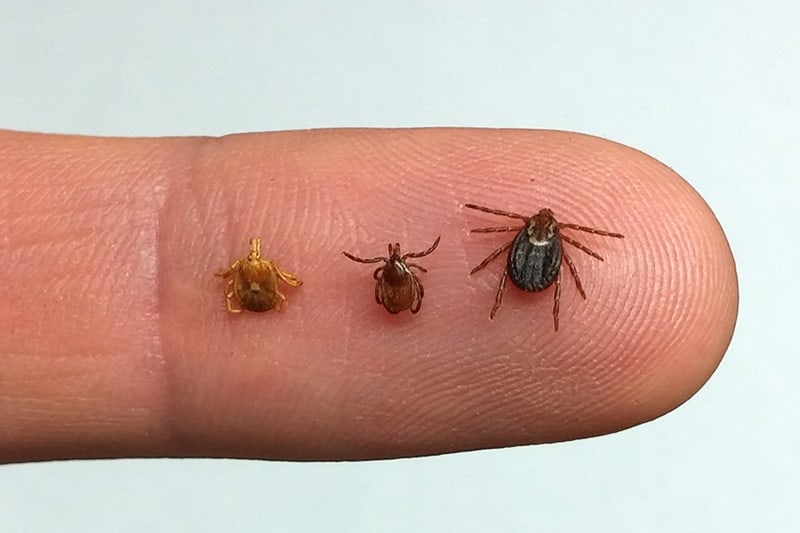
Tick Lifecycle
There are around 900 kinds of ticks that vary in size, coloring, insignias, etc. However, most of them share the same life-span which is divided into the egg stage, the seed stage, and the nymph stage.
The Egg
The eggs are mostly laid during the spring season and may vary in numbers and sizes depending on the dimensions of a tick that has laid them. The better nourished it is, the more eggs it can lay ranging from 1000 up to 4000 units. An egg hatches in the next two weeks which depends on the humidity and temperature of the environment.

The Seed
When the egg has hatched, the newly born larva and starts its new stage of life where it commences its first host search. Generally, such a host happens to be a small or medium-size animal, like a dog or squirrel. When a seed is fed, it separates itself from the host and descends into the ground where it starts to shed its corpus, or molt.
The Nymph
In about a two week period, a seed turns into a nymph and is ready to find a new host, this time bigger and stronger, like a human. During this stage, ticks are known to transmit diseases, if they possess such, since they are utmost active. After this, they repeat the process of disjoining themselves from the host and molt for another week or two.
The Adult
As of this time, a tick bite is the least harmful compared to its previous life stages. It finds a new environment and: (male) feeds for a certain time before detaching and dying, or (female) feeds until it lays another set of eggs, either on a host or somewhere in the grass, and dies.
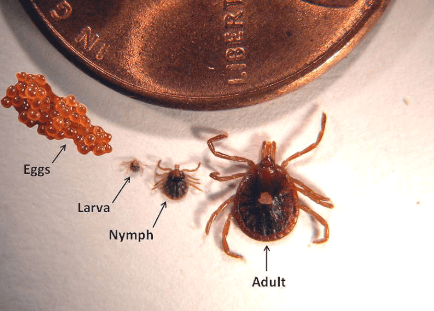
Classification of Ticks
Though there are hundreds of tick bites species, two most common types are known due to their harmfulness. Both of them differ in their lifespan and living conditions.
Hard Ticks
Or also known as Ixodidae, have a life cycle similar to the one described above and are easily recognized due to their large reddish oval body with a half-transparent belly. Their name, ‘hard ticks’, relates not only to their constitution but also to the way they attach to their host through a sharp bite which deposits a neurotoxic poison aimed at leaving their small-size victim motionless.
Soft Ticks
Or Argasidae, differ from hard ticks in a few ways.
First of all, their lifecycle is rather extensive since the Nymph stage may include up to five different transformations accompanied by cycles of feeding and resting.
Second of all, their bites are usually not followed by any pain and can stay completely unnoticeable to their host which makes them hard to identify.
Here are some other types of tick bites that can often be encountered:
American Dog Tick
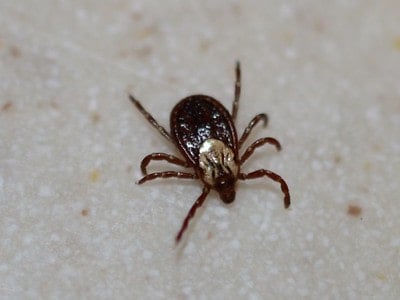
This species is known to be hosted mostly by dogs and rodents; however, it can also favor a human if it happens to get on their skin. It’s distinguishable for its dark brown color and a pale spherical plate on its back. They are often found in mountainous areas since they prefer moist and cool air conditions.
Lone Star Tick
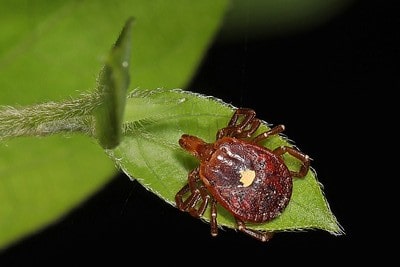
A Lone Star Tick has a distinct pale dot on their corpus. Even though it’s hard to imagine, this kind of bug is considered one of the most determined and hostile. The reason for that is that it is known to follow a host-to-be after it has targeted them.
Eastern Blacklegged Tick
Inhabiting forest and shrub areas, these ticks tend to attach their bodies to deer and other large mammals. Their salmon coloring makes them visible to the naked eye only when they are swollen with one’s blood. Only female representatives of this species are considered dangerous since males have no tendency to feed.
What’s the Difference Between Ticks and Lice?
It can be hard for an untrained eye to distinguish between these parasites since they may look alike and have similar constitution features. On the other hand, their interaction with hosts is different in a number of ways and it can also have parallel outcomes.
- Tick
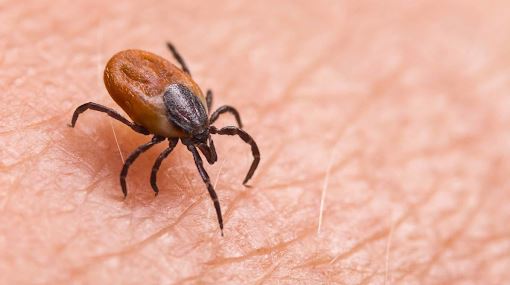
- Louse
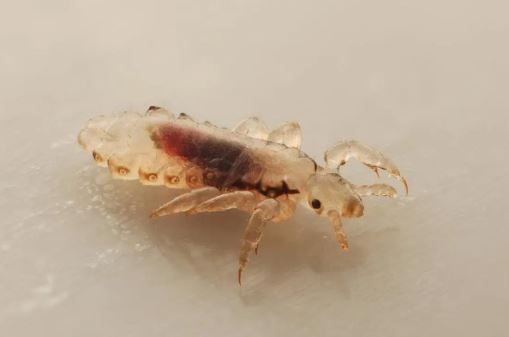
Similarities
- Both of the species are mites and they tend to inhabit animal and human skin where they find a source of feeding. Lice and ticks feed on blood by sucking it directly from a host’s upper skin layer.
- They transmit diseases as a result of blood consumption.
- The parasites have resembling life cycles and are extremely dangerous during their Nymph stage.
- They spend their whole lives as parasites and don’t prioritize laying eggs, that is, producing progeny.
Differences
- A louse has a separate body composition where the head and the abdominal parts are not joined; whereas a tick has a steady molded body structure which makes it more durable.
- The lifespan of both species is drastically different: a louse lives up to one and half a month, when a tick can survive up to two years.
- Lice inhabit human personal use items, such as clothes, beds, fabrics, etc. However, a tick finds its habitat in wooded and densely-grown forestlands and attaches itself to a passer-by.
- Ticks don’t mind sticking to any part of the human body, especially when it’s close to the bloodstream system, but lice prefer human scalp where, apart from blood, they find dead skin to feed off, as well.
Dangers of Tick Bites and Diseases
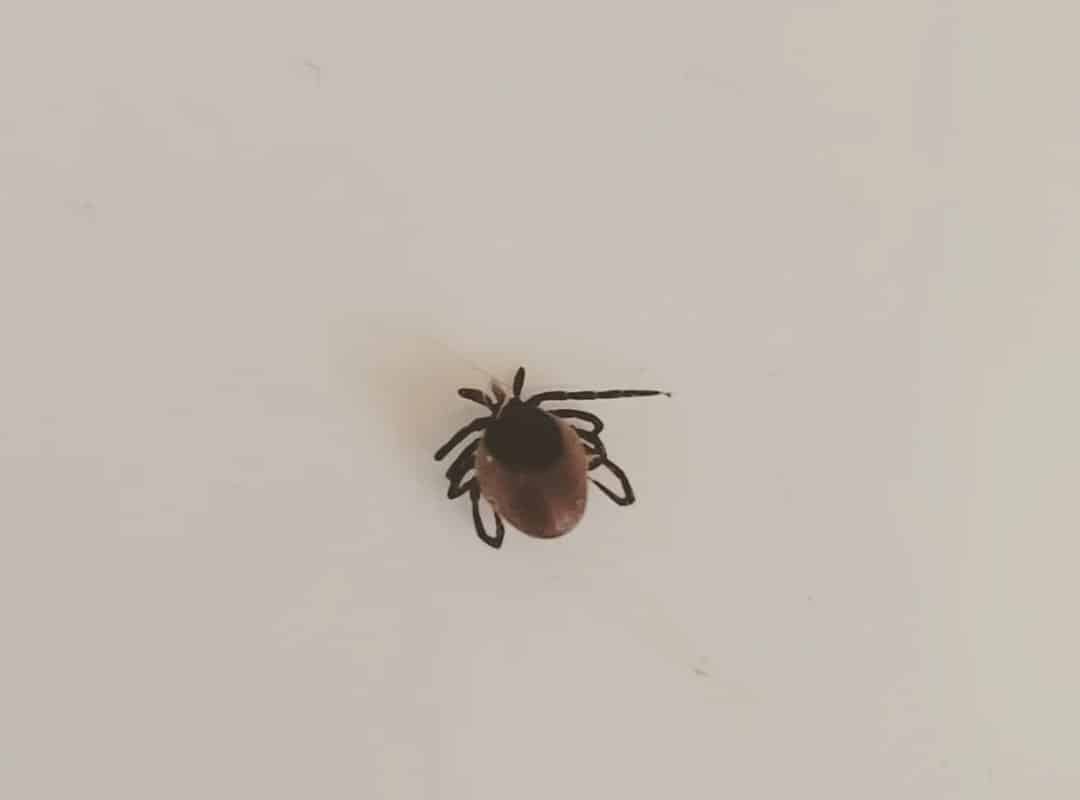
Apart from being annoying and extremely unpleasant, being bitten by a tick is seen as a huge risk for your health as it may contain a variety of tick-borne diseases. Though a vast majority of the parasites are harmless, some can be bearers of highly dangerous sicknesses. Here are a few of them:
Lyme Disease
Carried by black-legged ticks, Lyme disease may manifest through the following symptoms:
- high body temperature;
- headache;
- skin inflammation;
- overall body pain.
It is investigated that this condition can be transmitted by the parasite during a two-day period of time if such has not been removed initially.
Encephalitis
This disease is one of the most common conditions caused by ticks. Brain inflammation and spinal cord disruption being the outcomes of the infection, make it extremely difficult to treat and, in most cases, lethal for a human.
The illness is usually diagnosed by the following symptoms:
- stable high body temperature;
- muscle- and headaches;
- muscle stiffness;
- somnolence.
Babesiosis
This blood attacking illness has a similar strain to the one of malaria. It may spur out along with Lyme disease as they are both found in the same parasite transmitted by ticks.
The symptoms are akin to common flu or a seasonal cold, but their harshness depends on a person’s immune system, thus it can occur without any symptoms at all.
Symptoms:
- drowsiness;
- headaches;
- yellow pigmentation;
- mood swings.
Of course, besides the stated ones, there can be a range of other diseases that are caused by tick bites. However, these are the most common and may spur dangerous health complications.
Having acquainted with the basics about ticks, it’s time to get to know how to get rid of ticks at home and what to do during the tick infestation season.
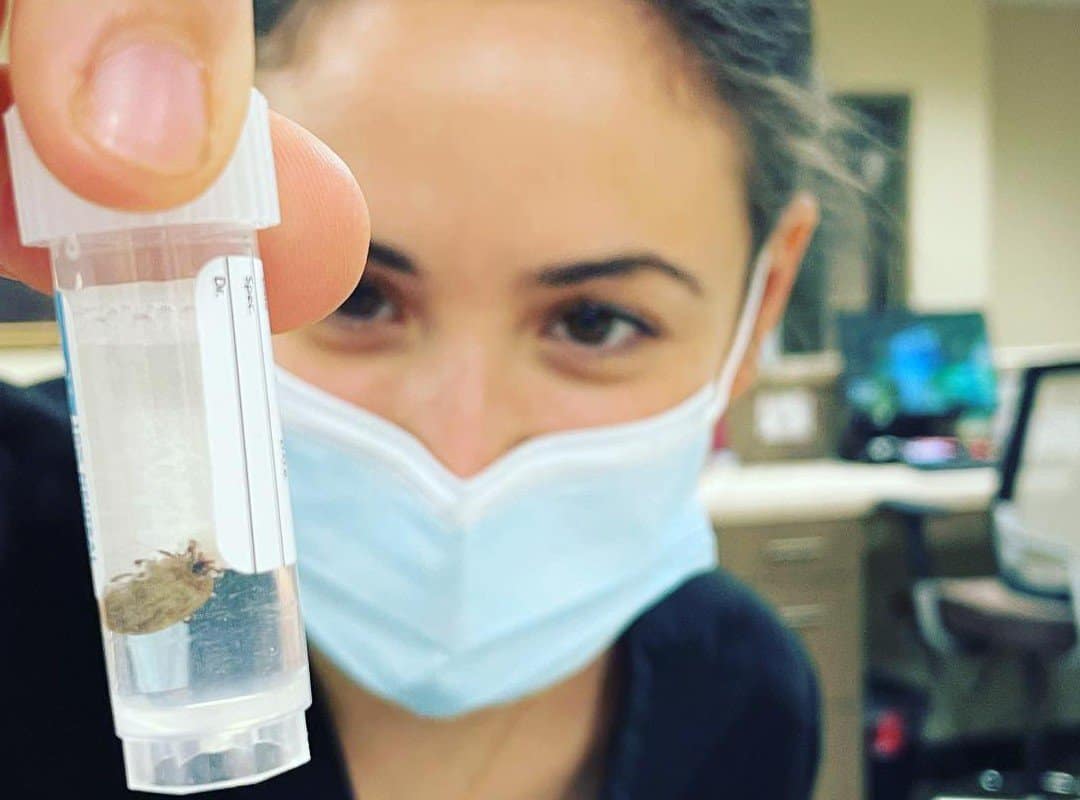
What to Do If You’ve Got Yourself a Tick?
If you think you have been bitten by a tick, what you have to do is to make sure that it really is one of those things. Generally, a tick infested area on your skin has one or a few of the following signs:
- painful and swollen skin;
- inflammation or burning;
- sharp and punctuating pain.
In case it is a parasite, you have to remove it as promptly and carefully as possible. For the longer it stays there, the higher the chances that it can transmit an infection.
In order to remove it, you are going to need a pair of tweezers. However, the ones you use for plucking your eyebrow won’t do, since a tick squirts a kind of substance that resembles cement so that it remains there untouched. Use good-quality tweezers that you can buy in a tools shop.
Step 1

Before dealing with it, you may apply some oil onto the area and wait for a few minutes. When the tick is covered with such a dense substance, it becomes more difficult for it to breathe and, therefore, it feels the need to move its head out of the skin to gasp.
Step 2
Hold the tweezers upwards and get a hold of the exposed tick body as close to the skin as possible and start pulling. Mind, that you shouldn’t twist the tweezers as the tick’s head can stay firmly stuck in the skin.
Step 3
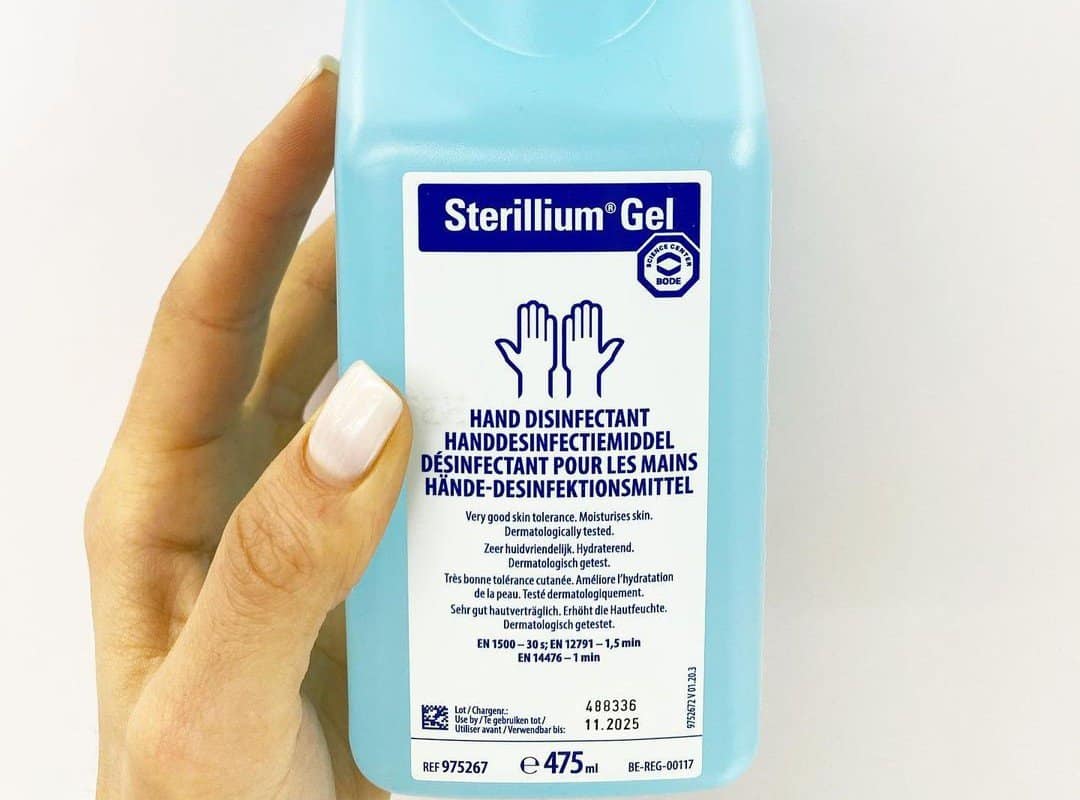
Once the tick is out, you need to apply some disinfectant to the area. You can use either alcohol or other alcohol-including substances.
I advise you to not even try to apply a home remedy to treat an infected site because most of those can be more harmful than useful. So, DON’T:
- …use your hands for removal. Ticks can vomit when they experience blunt pressure which will direct their saliva into your bloodstream;
- …apply fire onto a tick. This can also cause the tick to vomit into your bloodstream;
- …spear the mite. If it crawls back onto you, it will surely try to attach itself to you again.
What to Do If Your Dog Has Got a Tick?
Firstly, it’s a good habit to have a tick control and examine your pet every time after a walk. The reason for this is quite obvious — dogs like to wander around in the grass and get into bushes, where ticks and all kinds of leeches can be. Checking your pet for any of those can save you a lot of time and nerve. Here’s a few guidelines on how to get rid of ticks on dog FYI.
Check the following to reassure yourself:
- Toes;
- Ears and eyes;
- Around the tail.
However, if the matter on how to get rid of ticks on a dog should occur, then here is what you can do then apply the same technique as for a human (see above) and pull the tick slowly but firmly.
Related Post: Best Flea & Tick Treatments for Dogs
How to Get Rid of Ticks in Yard?

It’s essential to know how to control ticks and, more importantly, what the most common means of getting rid of ticks are. Although it doesn’t always mean tick extermination or killing ticks, sometimes all you need to do is attend to your yard or garden regularly.
By maintaining cleanliness of an area, you can create a free-of-ticks place that will prevent tick infestation. Follow these hints to keep your safe zone:
Hint 1
Always dispose of leaves. Tick bites find moist and warmth of tree leaves piles very comfortable. They can live and reproduce there waiting for a host to come around.
Hint 2
Maintain cleanliness of dense areas, such as bushes, shrubs, trees, etc. By cutting them down or, at least, trimming them from time to time you keep ticks from spreading all over the place.
Hint 3
Mount tall (up to 4ft) timbers or wooden logs to separate different parts of your garden. It will limit an area for tick bites to infest.
Hint 4
Buy either natural tick spray or professional tick insecticide and spray in all over your yard. Make sure to use personal protective equipment to stay safe while using the insecticide.
How to Prevent Ticks From Spreading in Your House?
As far as I’m concerned, instead of seeking for the best way to kill ticks, you should learn how to prevent them from spreading in the first place, especially if those are aiming at your house.
The multitude of fighting techniques is always based on a single principle, i.e. to maintain conditions that are utmost unfavorable for them. I’d like to suggest a few that I prefer to use myself.
Rule 1
You are unlikely to get ticks in your household if you don’t bring any along from the outside. To protect yourself, you can:
- Apply tick repellent substances onto your body when you go into the wild and make sure that all members of your family do the same. You can always Google what kills ticks.
- When going outside to dense forests or shrubs, put in white or bright color clothes. This will help you detect mites right on the spot.
- If you are to go to a shady, moist area that ticks enjoy so much, make sure to cover all bare parts of your body by tucking in pants, wearing a hat and long sleeves, etc.
Rule 2
Avoid dog tick infestation by checking your pet after each walk. Use anti-parasite pet products and repellents.
Rule 3
Though it’s rather rare, you may have found tick in house. If it’s not always clear how to kill a tick at your household, you can always use natural (not harmful) pesticides and spray them over surfaces where a bug could possibly be.
- Reduce your household’s humidity and temperature levels – ticks cannot survive in an environment with less than 90% of moisture.
- Never throw away a tick into a sink or outdoors since it can easily crawl back into the house. A better option is to wrap it in a cloth or a piece of paper and flash it in the toilet.
Tick Treatment for Home: Top 6
1. Sawyer Products Premium Insect Repellent – Tick Infestation Treatment
[amazon box=”B00VV5KRD8″ template=”vertical” tracking_id=”how-to-get-rid-of-ticks-20″ button_text=”Check price on Amazon”]
Specifications:
- Active Ingredient: Picaridin 20%
- Scent: Unscented
- Item Volume: 4 Fluid Ounces
- Item Form: Spray
- Item Weight: 0.7 Pounds
- Item Dimensions LxWxH: 1.88 x 2.5 x 6.5 inches

The Sawyer Premium Insect Repellent is a great choice for outdoor use for both children and adults. Elaborated by Sawyer that has more than 30 years of experience in insect repelling products, it combines the best scientific and innovative approaches to protecting skin from a vast array of harmful insects.
The formula created specifically to repel insects that may carry serious diseases during the spring and summer season is potent against mosquitos, ticks, chiggers, and many other pests.
The lotion is pleasant to the touch without any waxy aftersense. Its conceited composition secures rapid evaporation and leaves no stains, thus making it safe for any apparel, plastic or steel accessories, as well as fabrics and jewelry. The 0.34-ounce containers assure comfortable and simple use.
| Pros: | Cons: |
|
|
2. Natrapel 12-Hour Mosquito, Tick and Insect Repellent Pump Spray – Tick Control
[amazon box=”B00HJTH06M” template=”vertical” tracking_id=”how-to-get-rid-of-ticks-20″ button_text=”Check price on Amazon”]
Specifications:
- Active Ingredient: Picaridin 20%
- Item Volume: 3.4 Fluid Ounces
- Item Form: Spray
- Item Weight: 0.08 Pounds
- Item Dimensions LxWxH: 2.5 x 1 x 6 inches

The Natrapel 12-Hour Spray is a useful add-on both on a family trip and in the Thai jungles. Providing the skin with 12-Hour protection due to a substantial concentration of Picaridin, it repels mites and parasites in forests, shrubs, and brushes. It’s completely safe for the skin and doesn’t leave any greasy marks.
Using specifically selected elements, it’s aimed at making it repugnant for most insects though it gives off a slightly pleasant fragrant smell for its user.
Easy to utilize and carry along, it can be applied on both the skin and clothes for a better effect. Moreover, a handy and ample bottle is just the job for long-distance flights.
| Pros: | Cons: |
|
|
3. Bayer K9 Advantix II Flea, Tick and Mosquito Prevention – Against Dog Tick Infestation
[amazon box=”B004QMX4YW” template=”vertical” tracking_id=”how-to-get-rid-of-ticks-20″ button_text=”Check price on Amazon” button_detail=”https://shareasale.com/r.cfm?b=410159&u=2583381&m=43235&urllink=www%2Edomyown%2Ecom%2Fk9%2Dadvantix%2Dii%2Dfor%2Ddogs%2Dp%2D14034%2Ehtml%3Fsub%5Fid%3D14032&afftrack=how%20to%20get%20rid%20of%20ticks” button_detail_text=”Check price on DoMyOwn”]
Specifications:
- Active Ingredient: Permethrin
- Item Form: Drops
- Item Weight: 0.15 Pounds
- Product Dimensions LxWxH: 7.75 x 1 x 4.25 inches
- Target Pests: Flea, Tick

The Bayer K9 Advantix II Prevention exceeds any expectations. The formula is contrived to guarantee protection for your dog right after the first use. Unlike other products whose results you can see only after your pet has been bitten, Bayer K9 prevents it from happening, so that any risk for the dog is minimized. Infectious insects don’t die from biting the pet, they just avoid any contact with it.
The package contains four units with each dose lasting for a whole month, which I think is a great deal to strike. The substance spreads evenly all over the skin and is 100% safe.
| Pros: | Cons: |
|
|
4. Seresto Flea and Tick Prevention for Cats, 8-Month Flea Collar – Tick Treatment For Home
[amazon box=”B00B8CG5NK” template=”vertical” tracking_id=”how-to-get-rid-of-ticks-20″ button_text=”Check price on Amazon” button_detail=”https://shareasale.com/r.cfm?b=410159&u=2583381&m=43235&urllink=www%2Edomyown%2Ecom%2Fseresto%2Dcat%2Dflea%2Dand%2Dtick%2Dcollar%2Dp%2D14037%2Ehtml&afftrack=how%20to%20get%20rid%20of%20ticks” button_detail_text=”Check price on DoMyOwn”]
Specifications:
- Active Ingredients: Imidacloprid 10.0% Flumethrin 4.5%
- Age Range Description: All Life Stages
- Scent: Odorless
- Item Weight: 0.22 Pounds
- Product Dimensions LxWxH: 4.75 x 4.75 x 1.5 inches
- Target Pests: Fleas, Ticks

The Seresto Prevention Collar is an impeccable substitute for other means of fighting against fleas. Its structure is designed specifically for comfortable carrying and an almost invisible use.
Flumethrin emitted by the collar ensures constant and harmless extermination of fleas getting in contact with the cat, from top to bottom. Recommended by vets, this can also be a strong instrument in protecting the cat from ticks and other parasites.
Lasting for 8 months the Seresto Collar can be one of the most useful tools for a cat owner when it comes to protecting the pet from insects. It’s odorless and doesn’t interfere with your cat’s senses. Moreover, the collar’s dimensions are minute so it can be matched with their name collar, or used instead.
| Pros: | Cons: |
|
|
Related Post: Best Flea & Tick Collars For Dogs
5. Control Solutions Inc. 36.8 % Permethrin SFR 32 oz Pest Control Insecticide – Best for Tick Extermination
[amazon box=”B003IMO3I2″ template=”vertical” tracking_id=”how-to-get-rid-of-ticks-20″ button_text=”Check price on Amazon”]
The Permethrin Pest Control can be quite handy at large and small households as a tick treatment for home. Control Solutions Inc. is a renowned insecticide producer with a top-notch expertise in handling infestations.
Carefully selected elements designed to exterminate more about 80 kinds of parasites, mites, and other insects. Soaking efficiently and thoroughly into soil, the solution gets rid of unwanted pests with no harm done for an infested area.
This product is rather suitable for all types of sites, including households, lawns, concrete and asphalt, as well as gardens and other recreational areas. 32 Fl.Oz bottles can be used for more than one extermination.
| Pros: | Cons: |
|
|
6. Wondercide Natural Ready to Use Yard Flea, Tick and Mosquito Spray – What Really Kills Ticks
[amazon box=”B01FWRX2NM” template=”vertical” tracking_id=”how-to-get-rid-of-ticks-20″ button_text=”Check price on Amazon” button_detail=”https://shareasale.com/r.cfm?b=410159&u=2583381&m=43235&urllink=www%2Edomyown%2Ecom%2Fwondercide%2Dflea%2Dtick%2Dcontrol%2Dyard%2Dgarden%2Dconcentrate%2Dinsecticide%2Dp%2D17059%2Ehtml&afftrack=how%20to%20get%20rid%20of%20ticks” button_detail_text=”Check price on DoMyOwn”]
Specifications:
- Active Ingredient: Cedarwood Oil 12.63%
- Item Weight: 2.35 pounds
- Coverage area: up to 5000 sq.f.
- Item Dimensions LxWxH: 9.21 x 5.24 x 2.52 inches
- Target Species: Ants, Fleas, Ticks, Mosquitoes and Hundreds of other pests
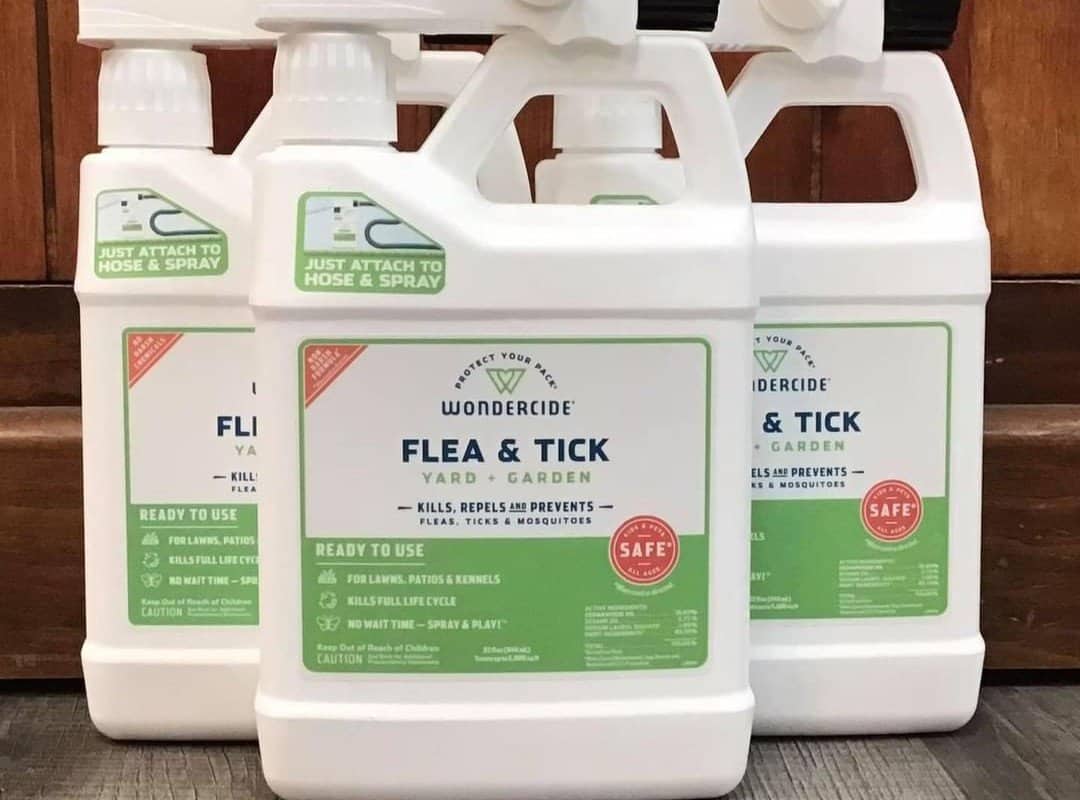
The Wondercide Natural Spray is a multifunctional tool against ticks, fleas, and mosquitos that may inhibit both the in- and outdoor sites. An easy-to-use handle makes one’s cleaning experience comfortable and prompt without having to deal with manual appliances. The spray covers over 4,000 square feet of vegetation or around-house sites and needs to be reapplied once every 4-8 days until the infestation is over.
Infused with tree essences, it affects insects from inside by harming their vitals, which stops them from spreading in the area and repels the mites for good. Formula based on natural components, secures safe and harmless usage for adults, children, and pets.
| Pros: | Cons: |
|
|
FAQ
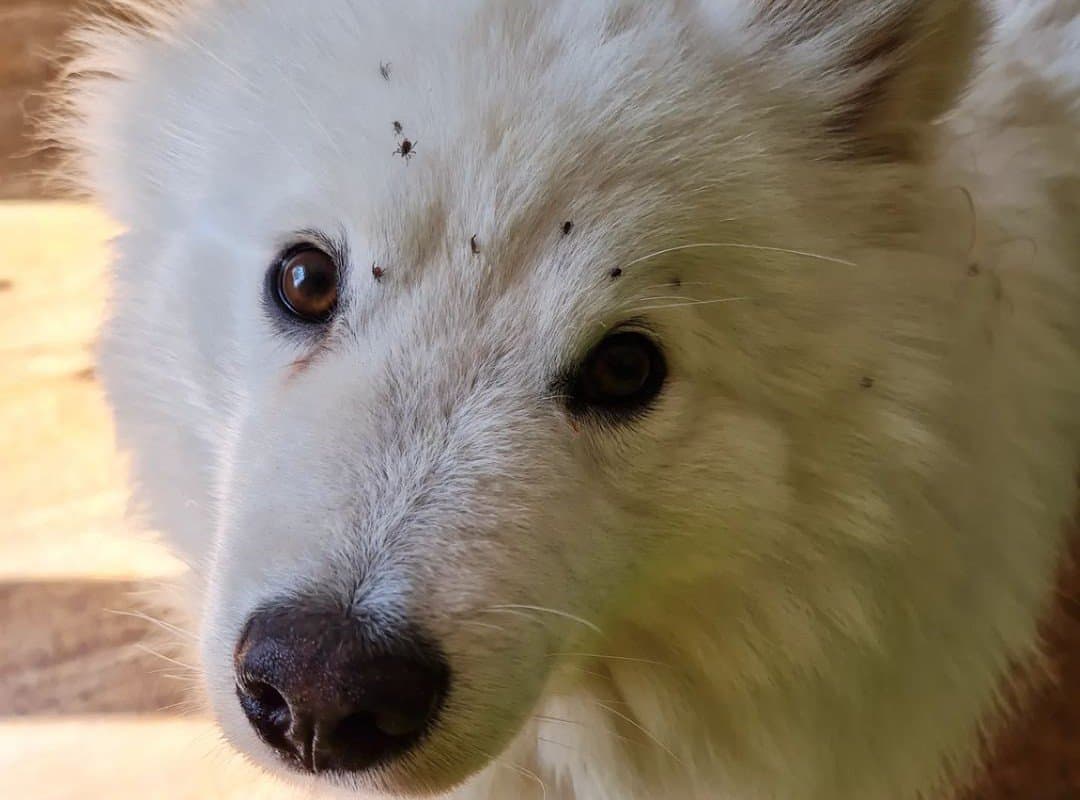
Where Do Ticks Come From?
Ticks’ natural habitat is always shady, moist, and with lots of warmth. Thus, they normally live on brush and tree leaves, in dense vegetation or tall grass.
When Are Ticks Most Active?
Both reproduction and activity of ticks usually lie between mid-spring and the early fall. During this time they are in need of blood meals so that females can lay eggs (up to 5000) and cling to hosts.
[su_note note_color=”#e5e2d4″]Related post: Best Essential Oils that Repel Ticks[/su_note]
What Does a Tick Nest Look Like?
You would never know even if you were staring right at one of them. A tick nest is so minute that it’s no bigger than the size of two female ticks. It is usually reddish-colored and looks like a spoon of caviar.
Where Do Ticks Lay Eggs?
Mostly, wherever they find suitable conditions, such are moist and dark places, like the back of a leaf or the bottom of a stem.
Can Ticks Live in Your Bed?
Technically speaking — yes, they can. However, this species of parasites is extremely picky when it comes to atmospheric conditions and typical house conditions, which are dry and cool, are not suitable.
How Long Do Ticks Live on Clothing?
Unfortunately, up to 3 days. But, if it’s dry and cool, they can last no longer than 24 hours.

Bottom Line
The warm seasons bring a lot of joy, but they also are accompanied by dangers, like ticks, fleas, mosquitos, etc. All means are acceptable in a fight against malevolent pests. However, the best way to come out as the winner at the end is always to prevent a fight from happening.
I hope you’ve found my expertise and advice in this article useful and interesting; and now you know how to protect yourselves, your beloved pets, and your home. Stay safe and well!

